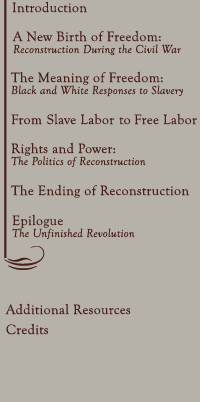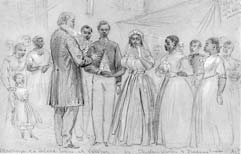




"Marriage
of a Colored Soldier at Vicksburg,"
Alfred R. Waud, c. 1865.
(The Historic New Orleans Collection,
1965.71)
Click image to enlarge.
Bureau records indicate that some marriages involved young men and women marrying for the first time, while others legalized slave unions made years before.
Copyright
2003
